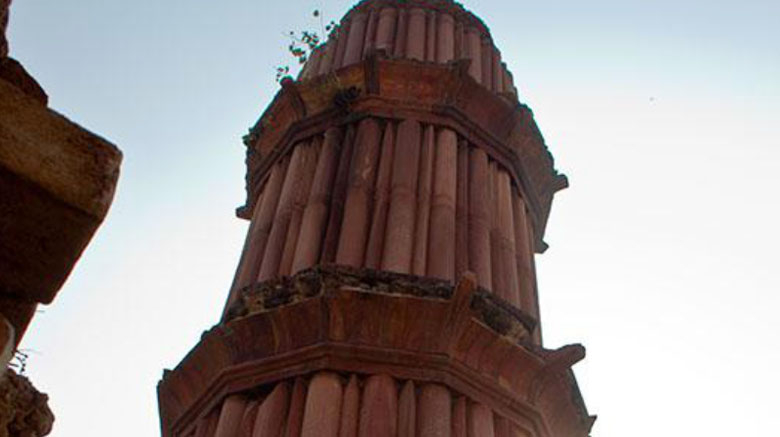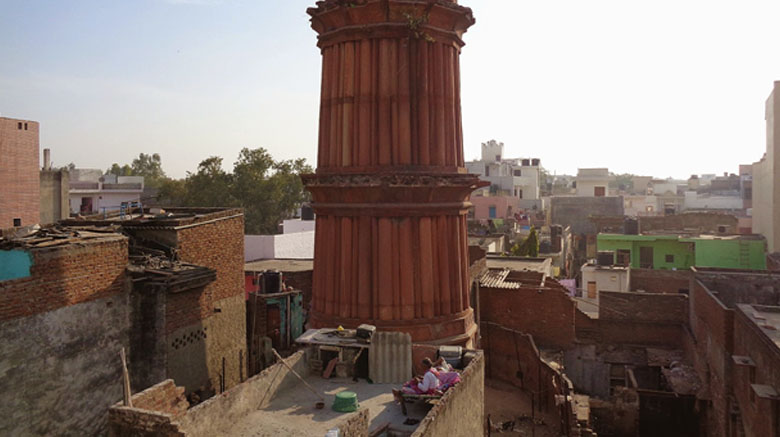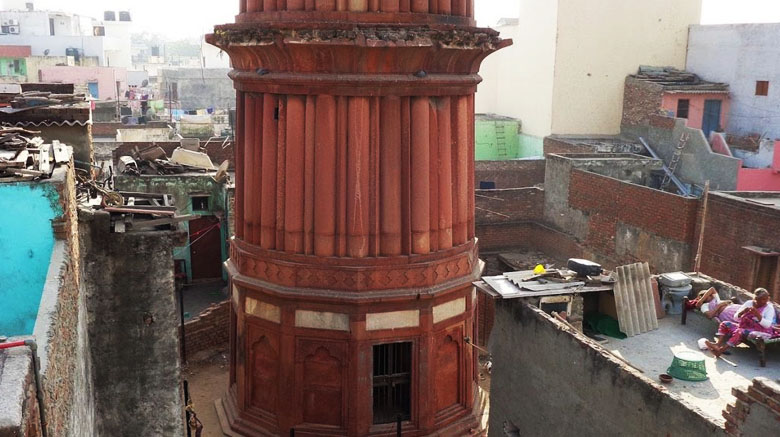Delhi is the city filled with most Mughal era architecture, some left tall, some are fade into the oblivion, some succumb to the wrath of time. Minar in the Hastsal village is one such unfortunate monument which has faded into oblivion. It is forgotten to such an stage that even locals of the neighbourhood are not aware of its presence. Known to be a hunting ground for the Mughal emperor Shah Jahan during the end of 17 century. He is attributed to built the monument which resembles the famous Qutub Minar. Referred as mini Qutub Minar, the monument is today covered by hundreds of houses, shrinking the area of Minar complex. The top two floors of the monuments have suffered badly the decay over the time but the Minar still stands tall. There was a trust to a lake around but with modern day construction all around the complex, the possibility of existence of lake is bleak.
HISTORY OF THE ATTRACTION
If we believe in the oral past then Hastsal used to be submerged underwater and it was the place where the elephants used to come to bathe. Literally meaning of the word Hastsal translates to the resting place of elephants. That area was a hunting ground of Mughal emperor Shah Jahan, who commissioned to built of mini Qutub Minar. The Minar was built at a height of roug...
Delhi is the city filled with most Mughal era architecture, some left tall, some are fade into the oblivion, some succumb to the wrath of time. Minar in the Hastsal village is one such unfortunate monument which has faded into oblivion. It is forgotten to such an stage that even locals of the neighbourhood are not aware of its presence. Known to be a hunting ground for the Mughal emperor Shah Jahan during the end of 17 century. He is attributed to built the monument which resembles the famous Qutub Minar. Referred as mini Qutub Minar, the monument is today covered by hundreds of houses, shrinking the area of Minar complex. The top two floors of the monuments have suffered badly the decay over the time but the Minar still stands tall. There was a trust to a lake around but with modern day construction all around the complex, the possibility of existence of lake is bleak.
HISTORY OF THE ATTRACTION
If we believe in the oral past then Hastsal used to be submerged underwater and it was the place where the elephants used to come to bathe. Literally meaning of the word Hastsal translates to the resting place of elephants. That area was a hunting ground of Mughal emperor Shah Jahan, who commissioned to built of mini Qutub Minar. The Minar was built at a height of roughly 50 feet, overlooking on the area. However, over the time with the change in leadership, the monument was not concentrated by those ruling. Till the date, the monument has nobody to take care off and is covered by houses. Before, the stairway was open for public but after the damages to the top two floors, the entry got restricted to the general public. Today, if you wish to befall this place, you would need the help of the locals in navigating you to this place. Lost within narrow lanes which is unorganized urban Delhi, Hastsal Minar still seeks help from the higher authorities, hoping for restoration to its former glory.
GETTING THERE
The nearest metro station to get is Uttam Nagar East Metro station on Blue Line. From there you can take an auto rickshaw, who will take you to the monument or guide you towards it.
THINGS TO DO IN & AROUND
The nearby neighbourhood of Uttam Nagar is a peopled area. You can also explore the local markets of Uttam Nagar. Also, there are various other shopping complexes in Vikaspuri and Janakpuri.
OPENING AND CLOSING TIMING
The monument is opened to all throughout the year. Although, the main pillar section has been restricted to the public.
ENTRY FEES
There is no entry fee charged.
BEST TIME TO VISIT HASTSAL MINAR
Can befall throughout the year, But, the best time to befall on any particular day is between 12-4 when the area is less crowded.






